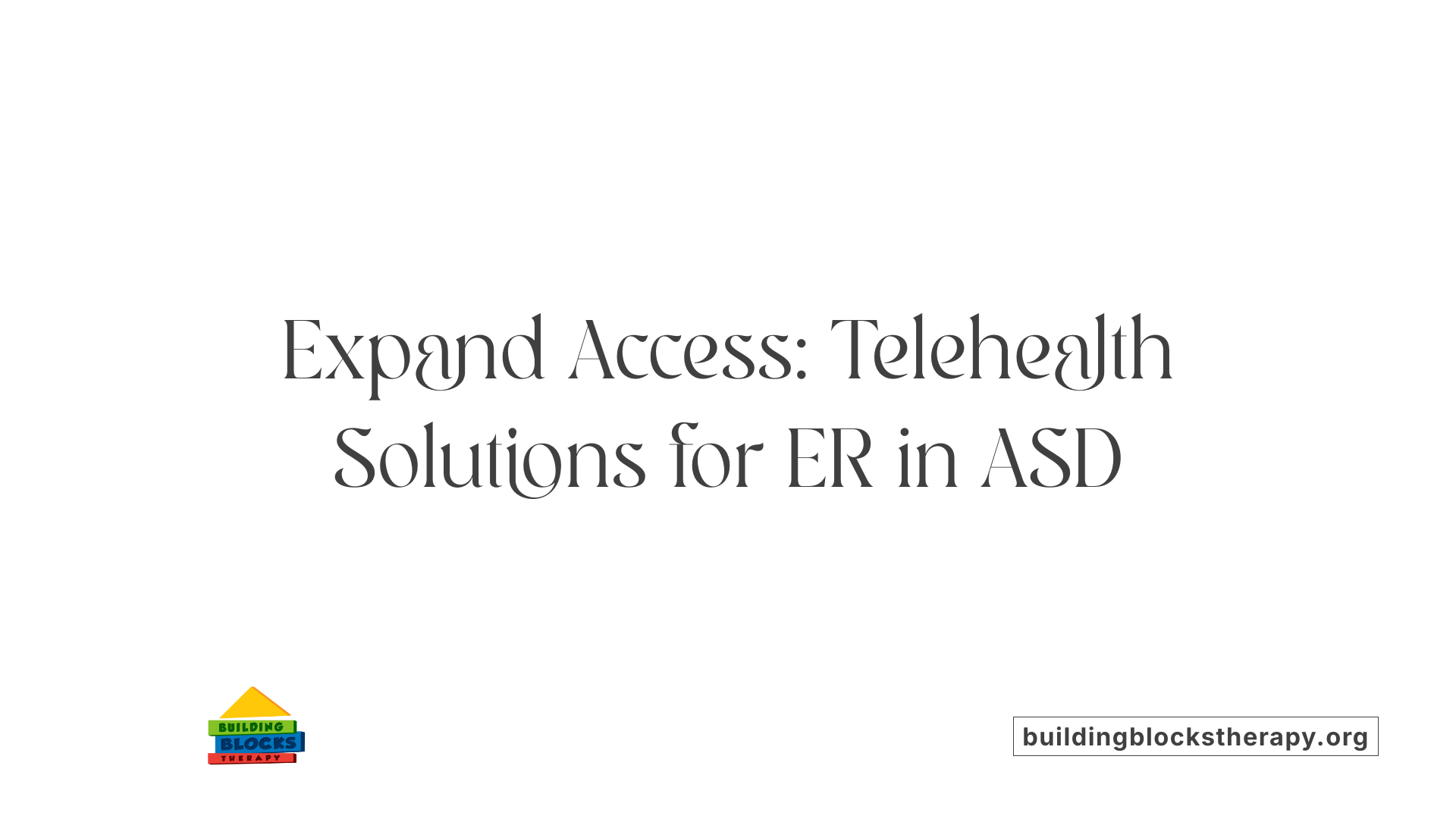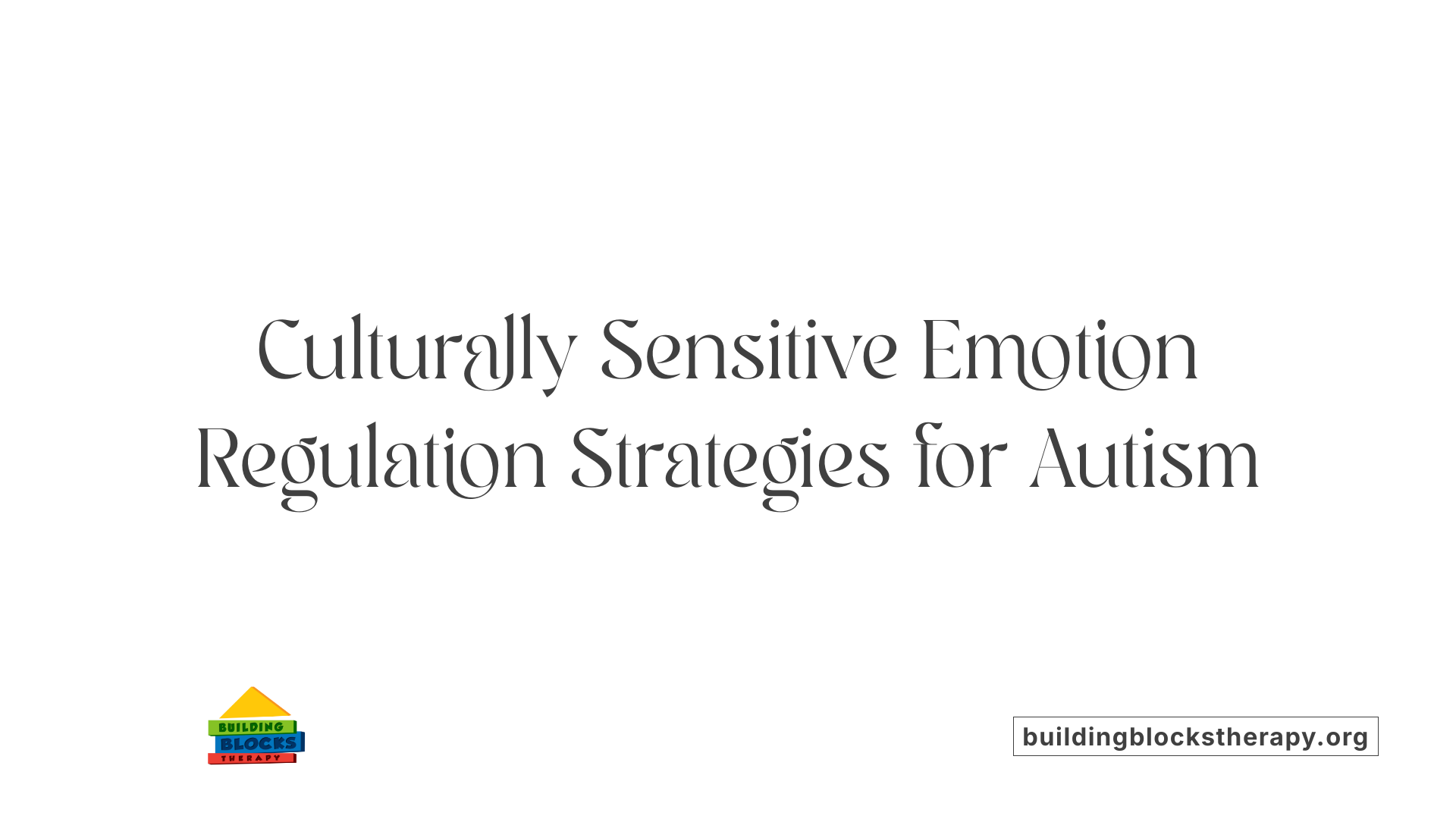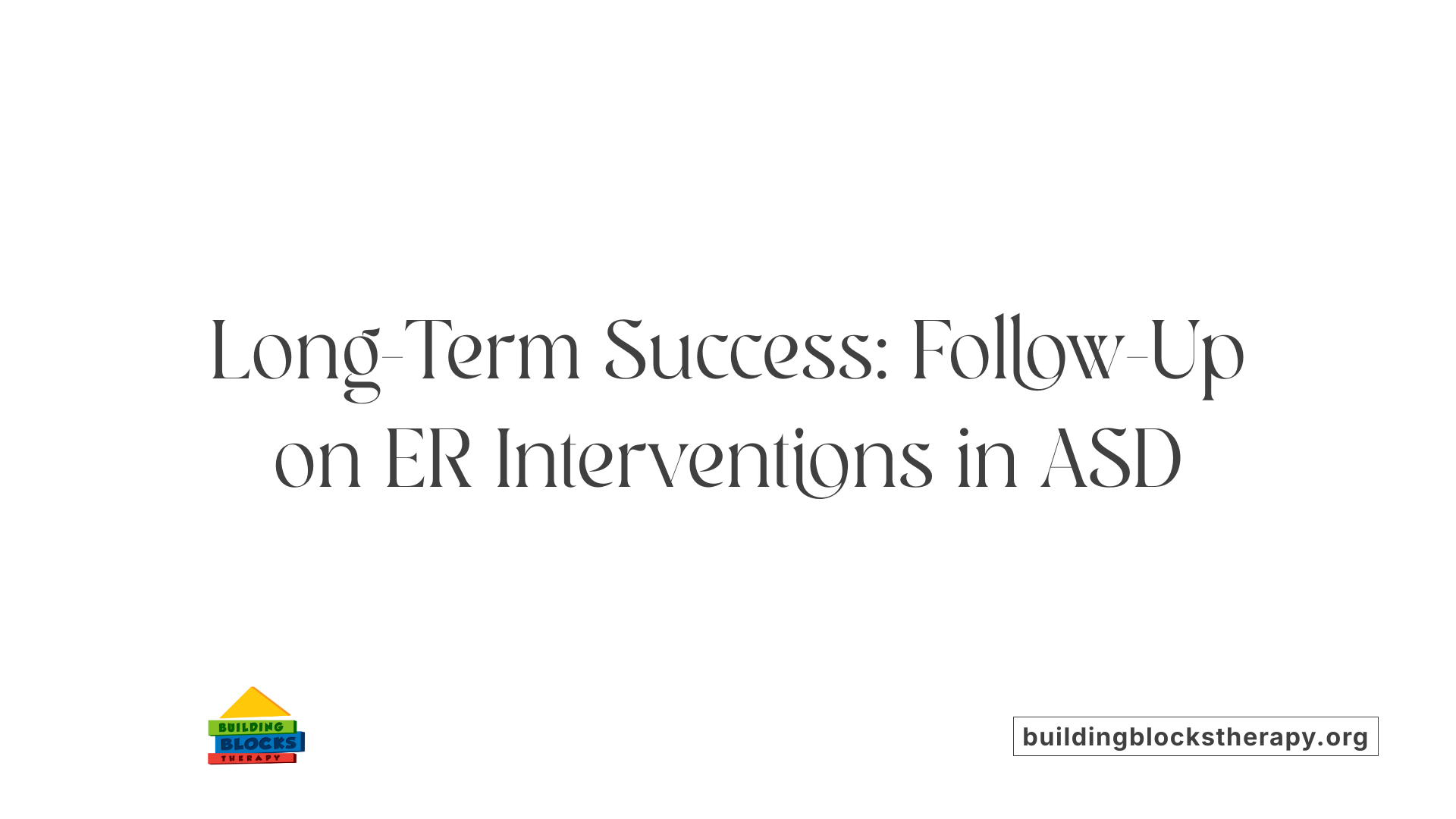Understanding Emotional Challenges in Children with Autism
Children with autism spectrum disorder (ASD) often struggle with regulating their emotions, leading to behavioral challenges such as tantrums and aggression. This article explores how behavioral therapy, particularly Applied Behavioral Analysis (ABA), and other evidence-based interventions support emotional regulation (ER) in children with ASD. By addressing underlying difficulties and leveraging specialized therapeutic techniques, these approaches enhance emotional control, social skills, and overall quality of life for autistic children and their families.
The Nature of Emotion Regulation Difficulties in Autism Spectrum Disorder
What makes emotional regulation particularly challenging for children with ASD?
Children with autism spectrum disorder (ASD) often face significant difficulties in regulating their emotions, which can lead to a range of behavioral disturbances, including tantrums, aggression, uncontrolled outbursts, and self-injury.
Disrupted emotion regulation as a core challenge
Emotion regulation (ER) difficulties in ASD are not just supplementary problems but are considered inherent to the condition. These difficulties contribute directly to behavior problems and mental health challenges rather than arising solely from other co-occurring disorders.
Behavioral disturbances linked to emotional dysregulation
Due to challenges in managing emotions, children with ASD may react with intense emotional responses. This dysregulation manifests as behaviors such as tantrums or aggression, often creating significant challenges in social and educational settings.
Core ASD characteristics contributing to ER difficulties
Several core features of ASD underpin these ER challenges:
- Alexithymia: Difficulty in identifying and describing one’s own emotions makes managing feelings complex.
- Theory of Mind deficits: Trouble understanding others’ perspectives causes misunderstandings and increased frustration.
- Social and communication impairments: These hinder the ability to navigate social interactions, leading to emotional distress.
- Impulsivity and rigidity: Difficulty adapting to change or controlling impulses contributes to emotional outbursts.
- Sensory sensitivities: Heightened responses to sensory input can overload the nervous system, complicating ER.
Children with ASD may also misinterpret social cues or focus on less relevant information, exacerbating frustration and impairing emotion regulation further.
This complex interplay of neurological, cognitive, and social factors focuses attention on the need for tailored interventions targeting ER within this population.
Neurobiological and Atypical Factors Influencing Emotion Regulation in ASD
Neurological Differences Affecting Emotion Regulation
Children with Autism Spectrum Disorder (ASD) often experience disruptions in brain function that impact emotion regulation (ER). Research shows that atypical neural circuitry in regions responsible for processing emotions and social information can create challenges in managing emotional responses. These neurobiological differences affect how emotions are experienced, interpreted, and controlled.
The Impact of Physiological Hyper-Arousal
Individuals with ASD frequently exhibit physiological hyper-arousal, meaning their nervous system may be overly sensitive or reactive. This heightened state of arousal can lead to increased emotional distress and difficulty calming down. Such heightened physiological responses exacerbate problems with emotional control and contribute to behavioral disturbances like tantrums or outbursts.
How ASD's Inherent Traits Predispose ER Problems
Core characteristics of ASD, such as alexithymia (difficulty identifying emotions), deficits in theory of mind (struggling to understand others’ perspectives), impulsivity, strict routines, and sensory sensitivities, all contribute to impaired emotion regulation. For instance, challenges in interpreting social cues may increase frustration, making it harder for children with ASD to regulate their emotions effectively.
Why Are Emotional Control Problems Inherent to ASD Rather Than Secondary?
Emotion regulation impairments are considered inherent to ASD due to underlying neurobiological differences like atypical neural pathways and physiological hyper-arousal. These intrinsic factors predispose individuals with autism to difficulty managing emotions. Consequently, emotional control problems often precede or contribute to other behavioral and psychiatric challenges rather than resulting from them.
Assessing Emotional Regulation in Children with Autism: Challenges and Tools

Why is assessing emotion regulation challenging in children with ASD?
Assessing emotion regulation (ER) in children with autism spectrum disorder (ASD) presents several unique challenges. One major barrier is communication difficulty, which is common in ASD. Many children struggle to express their feelings verbally, making it hard for clinicians and caregivers to understand the child's emotional state accurately. This communication gap complicates traditional assessments that rely heavily on self-report or verbal feedback.
How do children with ASD express ER difficulties differently?
Emotional dysregulation often manifests atypically in children with ASD. Instead of expressing feelings in ways typical for their age, these children may display behaviors such as tantrums, aggression, or self-injury. Such responses can obscure the underlying emotional issues and make it difficult to distinguish between emotional dysregulation and behavioral problems. Recognizing these atypical expressions is crucial for effective assessment and intervention.
What tools aid in assessing ER despite these challenges?
Visual aids have proven instrumental in overcoming some assessment barriers. For example, the Incredible Five Point Scale uses simple, visual representations to help children identify and communicate their emotions. This tool supports improved understanding and discussion of emotional states by breaking feelings down into accessible steps. Incorporating such visual scales enhances engagement and accuracy in ER evaluation for children with ASD.
Overall, combining awareness of unique communication and behavioral patterns with tailored assessment tools is vital for effective ER evaluation in autism. Using visual strategies can bridge gaps in communication and reveal important insights into a child's emotional experiences.
Applied Behavioral Analysis (ABA): Foundations and Core Techniques
What is Applied Behavioral Analysis (ABA) therapy?
Applied Behavioral Analysis (ABA) therapy is a science-based approach focused on understanding and modifying human behaviors, particularly effective for individuals with autism spectrum disorder (ASD). It aims to enhance social, communication, and learning skills by using evidence-based strategies.
Individualized program development
ABA therapy involves creating personalized programs based on detailed behavioral assessments. Certified behavior analysts conduct functional behavior assessments to identify specific behaviors to target. These individualized plans ensure that interventions address each person's unique needs and strengths, improving the chances of success.
Core ABA techniques
ABA uses a variety of techniques to promote positive behaviors and reduce problematic ones:
- Positive reinforcement: Rewarding desirable behaviors to increase their occurrence.
- Task analysis: Breaking complex skills into smaller, manageable steps to facilitate learning.
- Chaining: Teaching sequences of behaviors by linking individual steps together.
- Prompting and fading: Supporting the learner initially with prompts that are gradually reduced as independence grows.
These methods work in concert to encourage skill development and behavior improvements systematically.
Research and effectiveness
Extensive research supports ABA's effectiveness for individuals with autism. Tailored to individual needs, ABA interventions lead to measurable improvements in communication, social skills, and behavior regulation, making it a foundational therapy within ASD treatment.
How ABA Therapy Enhances Emotional Regulation and Social Skills in Children with Autism
ABA's Role in Improving Communication and Social Interaction
Applied Behavior Analysis (ABA) therapy is pivotal in helping children with autism develop vital skills such as communication and social interaction. By breaking down complex social behaviors into manageable steps, ABA uses positive reinforcement to encourage appropriate social responses and communicative attempts. This structured approach helps children with autism navigate social cues more effectively, which is essential given their difficulties with perspective-taking and interpreting emotions.
Shaping Adaptive Behaviors
ABA therapy focuses on shaping adaptive behaviors, which contributes significantly to better emotional regulation. Children with autism often face challenges like impulsivity, rigidity, and sensory sensitivities that can disrupt their emotional control. ABA techniques aim to increase self-regulation by encouraging desirable behaviors and reducing problematic outbursts such as tantrums or aggression. This behavioral shaping provides children with strategies to manage their emotions more effectively, leading to improved functioning in everyday situations.
Research Evidence Supporting ABA Benefits
Research substantiates the benefits of ABA therapy for children with autism, showing improved communication, social skills, and emotional regulation. Studies indicate that intensive early ABA interventions lead to notable developmental progress, enhancing social integration and independence. While traditional ABA programs emphasize behavior modification, emerging evidence suggests that integrating emotion regulation-focused components into ABA may further support children with autism in managing emotional disturbances.
How Does ABA Therapy Benefit Individuals with Autism?
ABA therapy benefits individuals with autism by applying behavioral learning principles to improve communication, social interaction, self-care, and academics. Utilizing detailed behavior analysis and positive reinforcement, ABA strengthens helpful behaviors and reduces challenges. Intensive early ABA interventions result in significant developmental improvements, aiding social integration and fostering independence, which are crucial given the emotion regulation difficulties common in autism spectrum disorder.
Techniques Employed in ABA Therapy to Foster Emotional Regulation
What kinds of techniques are used in ABA therapy?
ABA therapy employs several validated strategies designed to encourage positive behaviors while addressing behavioral challenges often seen in children with autism spectrum disorder (ASD).
Positive reinforcement and shaping behaviors
One of the primary techniques is positive reinforcement, where desired behaviors are immediately rewarded to increase their frequency. Shaping builds on this by reinforcing successive approximations towards a target behavior, gradually helping children improve their emotional responses and regulation in manageable steps.
Discrete trial training
Discrete Trial Training (DTT) breaks down complex skills into smaller, teachable units. Each trial includes clear instructions, a prompt if needed, a response from the child, and reinforcement or correction. This structured method supports the acquisition of emotion regulation skills by providing repeated, consistent practice in a clear, predictable manner.
Use of modeling, prompting, and fading
Modeling involves demonstrating appropriate emotional responses or coping strategies, often using video or live examples. Prompting guides the child to perform a behavior, and fading gradually reduces prompts to foster independence. This helps children learn to recognize emotions and apply regulation techniques in real-life scenarios.
Behavior chaining and redirection
Behavior chaining sequences individual skills into a complex behavior, such as identifying emotions, communicating feelings, and using a calming strategy. Redirection involves steering a child's attention away from inappropriate behaviors linked to emotional dysregulation toward more appropriate alternatives.
Together, these techniques form a comprehensive approach supervised by professionals, often integrated with visual supports and tailored strategies to address sensory sensitivities. The goal is to enhance children's emotional awareness and control, thereby reducing outbursts and improving social interactions.
Who Provides ABA Therapy? Professionals and Service Settings
Who typically provides ABA therapy services?
ABA (Applied Behavior Analysis) therapy is primarily provided by trained and certified professionals with specialized expertise in behavioral interventions for autism spectrum disorder (ASD).
Board Certified Behavior Analysts and behavior technicians
The main providers include Board Certified Behavior Analysts (BCBAs), who design and supervise individualized treatment plans based on behavioral principles. Behavior technicians, also called Registered Behavior Technicians (RBTs), often implement these plans directly under BCBA supervision, delivering daily therapy sessions.
Specialized companies offering in-home therapy
Many families access ABA therapy through specialized companies that focus on delivering services in-home. This approach facilitates treatment within natural environments, promoting skill generalization and active family involvement. These companies often coordinate schedules to fit the child's routine and provide consistent support.
Integration with multidisciplinary teams
ABA therapy services frequently integrate with other autism-related supports, such as speech therapy, occupational therapy, and social skills training, to address the broad needs of children with ASD. In some cases, multidisciplinary teams within organizations collaborate closely. Additionally, some service providers accept Medicaid and other insurance plans to reduce financial barriers for families.
This combined approach ensures comprehensive care, promoting better outcomes by addressing various developmental and emotional challenges faced by children with autism.
Selecting an ABA Therapy Provider: What Families Should Know
What should families consider when choosing an ABA therapy provider?
Choosing the right ABA therapy provider is crucial for effective autism support. Families should first ensure the provider's credentials—select therapists who are Board Certified Behavior Analysts (BCBAs) with specialized experience working with children on the autism spectrum. This formal certification guarantees advanced training and adherence to professional standards.
Importance of credentials and experience
Providers must have proven expertise in delivering personalized, data-driven treatment plans tailored to individual needs. Experienced therapists understand how to design sessions that respect the child's comfort and promote autonomy while using evidence-based ABA techniques.
Treatment approach and supervision quality
A quality ABA provider maintains structured supervision and regularly reviews progress through objective data to adapt the intervention as needed. The therapeutic approach should emphasize positive reinforcement rather than punitive measures, fostering a supportive environment that encourages learning and growth.
Family involvement and ethical considerations
Engaging families in the therapy process is important. Excellent providers prioritize clear communication and collaboration with caregivers, ensuring that parents feel informed and involved in goal setting and progress reviews. Ethical considerations include avoiding aversive procedures and ensuring respect for the child’s individuality.
By carefully evaluating these factors—credentials, treatment quality, supervision, and family involvement—families can select ABA providers best suited to support their child's developmental journey.
CBT and Other Behavioral Interventions Complementing ABA in ASD
How does modified cognitive-behavioral therapy (CBT) support emotion regulation in ASD?
Modified CBT programs tailored for individuals with autism spectrum disorder aim to improve emotional awareness and regulation skills. These interventions often use visual aids, such as the Cat-kit, to facilitate understanding of emotions and regulation strategies. Research indicates that such CBT interventions can reduce difficulties in describing feelings and maladaptive emotion regulation in both children and adults with ASD. Improvements in social skills and reductions in anxiety have also been observed, highlighting CBT’s broader positive effects beyond solely emotion regulation.
What roles do mindfulness and acceptance-based approaches play?
Mindfulness and acceptance-based strategies are increasingly integrated into interventions for ASD to complement traditional CBT. These approaches focus on increasing present-moment awareness and fostering acceptance of emotional experiences rather than avoidance. Incorporating mindfulness can help reduce physiological hyper-arousal and impulsivity often seen in ASD, supporting better control over emotional responses. Some interventions blend mindfulness with play-based or yoga-based activities, further supporting socio-emotional competence in autistic children and adolescents.
How do psychoeducation and skill development contribute to treatment?
Psychoeducation is a core element in many behavioral interventions for ASD, aimed at educating individuals, parents, and educators about emotion regulation challenges inherent in autism. Structured activities and homework assignments reinforce the practical application of learned skills. Active involvement of parents and teachers in training sessions helps generalize these skills across different environments, enhancing long-term benefits. Occupational therapists frequently facilitate these interventions, leveraging their client-centered approach to adapt content and delivery methods according to individual needs.
These combined behavioral strategies, including tailored CBT, mindfulness practices, and comprehensive psychoeducation, show promise in addressing emotion regulation difficulties in ASD beyond the scope of applied behavior analysis (ABA). Ongoing research continues to refine and validate these approaches to optimize outcomes for this population.
Evidence from Meta-Analyses: CBT’s Impact on Social Skills and Emotion Regulation
What Does Research Say About CBT's Effectiveness in ASD?
Randomized controlled trials (RCTs) provide robust evidence supporting cognitive-behavioral therapy (CBT) as an effective intervention for children with autism spectrum disorder (ASD). A meta-analysis synthesizing results from 214 children with ASD revealed that CBT significantly improves social skills, a core challenge in autism. These trials include high-quality studies that use rigorous designs to ensure reliable outcomes.
How Does CBT Improve Social Responsiveness?
Social responsiveness, which refers to how well an individual interacts and communicates socially, often improves following CBT interventions. This was measured using the Social Responsiveness Scale (SRS), a widely used tool to assess social impairments in ASD. Both parent and teacher reports confirmed improvements in social functioning after CBT, indicating that gains extend beyond the clinical setting into everyday environments.
Are There Benefits Beyond Anxiety Reduction?
Most studies initially aimed at reducing anxiety symptoms in children with ASD. However, social skill improvements emerged as a secondary but important outcome. This suggests that CBT may have broader benefits beyond managing anxiety, potentially including enhanced emotion regulation and interpersonal competence.
CBT programs typically incorporate psychoeducation, skill-building exercises, and strategies tailored to the unique emotional and cognitive profiles of autistic individuals. While more research is needed to explore the long-term impact of these interventions, current evidence points to CBT as a promising approach for addressing both emotional and social difficulties in ASD populations.
Group-Based Emotion Regulation Interventions Including Parents and Teachers
How Do Group-Based Emotion Regulation Interventions Benefit Socio-Emotional Competence in Autistic Children?
Group-Based Emotion Regulation Interventions (GBERs) have demonstrated positive effects on the socio-emotional competence (SEC) of autistic children aged 7 to 18 years. By targeting emotional awareness, regulation strategies, and social functioning, these programs help children improve skills such as empathy, pragmatic language, and emotion regulation. Improved SEC supports better behavioral outcomes and social interactions, developing foundational abilities for emotional resilience.
What Variety of Therapeutic Approaches Are Used in These Group-Based Programs?
GBERs employ several therapeutic methods beyond traditional cognitive-behavioral therapy (CBT). Alongside CBT-based approaches, some programs utilize play-based therapies, mindfulness practices, and yoga-based interventions. This variety allows tailoring to individual preferences and needs, enhancing engagement and effectiveness. Structured activities and psychoeducational components build understanding of emotional concepts and build adaptive regulation strategies.
Why Is Involvement of Parents and Teachers Essential in These Interventions?
Active participation by caregivers and educators is a crucial feature of successful GBERs. These adults receive targeted training sessions and psychoeducation to understand emotion regulation difficulties typical for autistic children. Involvement of parents and teachers facilitates consistent reinforcement of skills at home and school, promoting generalization and maintenance of gains. Homework tasks often extend learning beyond group sessions, supported by the consistent encouragement and modeling from these key figures.
Delivery and Practical Considerations
Such interventions are primarily delivered face-to-face within community or school settings by trained professionals including psychologists, speech therapists, and occupational therapists. Occupational therapists, in particular, play an important role due to their client-centered and occupation-focused expertise, enhancing accessibility and tailoring of interventions. Facilitator training and fidelity monitoring insure program quality and consistency. While telehealth options show potential, wide evaluation and cultural adaptations for diverse populations remain areas for future development.
Role of Occupational Therapists and School-Based Programs in ER Interventions
How Does Occupational Therapy Support Emotion Regulation in ASD?
Occupational therapists (OTs) bring a client-centered and occupation-focused approach to emotion regulation (ER) interventions for children with autism spectrum disorder (ASD). Their expertise allows them to tailor therapies to each child's unique needs, daily routines, and environments, which enhances engagement and practical application of ER strategies.
OTs are equipped to incorporate visual tools, structured activities, and personalized skill-building exercises into treatment plans. They also support caregivers and educators by providing psychoeducation and coaching, promoting consistent use of ER techniques across settings.
How Are ER Interventions Delivered in Community and School Settings?
ER programs for autistic children often take place in familiar community spaces or schools to maximize relevance and accessibility. These settings facilitate the generalization of learned skills into daily social and academic contexts.
Delivering interventions face-to-face within schools or community centers encourages active participation of parents, teachers, and therapists. This joint involvement strengthens skill reinforcement and helps integrate ER strategies into classrooms and homes.
Group-Based Emotion Regulation Interventions (GBERs) implemented in these settings have demonstrated benefits in socio-emotional competence, social skills, and empathy.
Why Is Facilitator Training and Program Fidelity Important?
To ensure effective and consistent ER interventions, facilitator training is emphasized. Psychologists, speech therapists, and occupational therapists receive specific instruction on intervention protocols and adapting content to individual needs.
Fidelity monitoring guarantees that programs are delivered as designed, maintaining treatment quality and supporting reliable outcomes. It also helps identify areas for improvement and guides future research.
Together, well-trained facilitators and fidelity practices enhance the success of ER interventions, enabling autistic children to develop better emotional control and social functioning within their communities.
| Aspect | Description | Importance |
|---|---|---|
| Client-Centered Approach | Individualized focus on child’s needs and contexts | Promotes engagement and applicability |
| Community & School Setting | Familiar environments for intervention delivery | Supports skill generalization and routine integration |
| Facilitator Training | Professional development for therapists and educators | Ensures intervention quality and effective implementation |
| Program Fidelity | Monitoring of adherence to treatment protocols | Maintains consistency and reliable outcomes |
| Parent & Teacher Involvement | Active participation in training and homework reinforcement | Enhances transfer of ER skills across settings |
Visual Supports and Psychoeducation Tools Supporting ER in Children with ASD

Use of Visual Aids Like the Cat-kit and Incredible Five Point Scale
Visual tools play a crucial role in supporting emotion regulation (ER) among children with Autism Spectrum Disorder (ASD). Due to communication difficulties and challenges in identifying and describing emotions, common in ASD, visual aids such as the Incredible Five Point Scale and the Cat-kit help make abstract emotional concepts concrete and accessible. These tools provide clear, straightforward representations of emotional states that can guide children in recognizing their feelings.
Helping Children Identify and Communicate Emotions
Children with ASD often struggle with alexithymia and social communication impairments, which hamper their ability to understand and convey their emotional experiences. Visual aids support them by offering structured ways to articulate emotions, thus reducing frustration and behavioral outbursts. For example, the Incredible Five Point Scale uses a numbered emotional intensity rating that helps children indicate how they feel in different situations, making it easier for caregivers and therapists to assess emotional states and intervene appropriately.
Strengthening Emotional Awareness
Psychoeducation tools integrated within cognitive-behavioral therapy programs employ these visual supports to enhance children's emotional awareness systematically. Programs often teach children how to recognize, label, and manage emotions using visual prompts and activities. This scaffolding fosters greater emotional insight, contributing to more adaptive emotion regulation strategies. Over time, children gain increased ability to self-regulate, which can lead to reduced tantrums, aggression, and other behavioral difficulties common in ASD.
The combination of visual aids and psychoeducation represents a promising approach to addressing ER challenges in children with ASD. By converting complex emotional concepts into understandable formats, these tools empower children to identify and communicate their feelings effectively, forming a foundation for successful emotion regulation.
Addressing Anxiety and Internalizing Symptoms through Behavioral Therapy
How Are Anxiety, Depression, and Emotion Regulation Strategies Related in ASD?
Children and adolescents with Autism Spectrum Disorder (ASD) often struggle with internalizing symptoms, such as anxiety and depression. These emotional difficulties are closely linked to how they regulate their emotions. Both adaptive (helpful) and maladaptive (unhelpful) emotion regulation strategies influence the intensity and frequency of anxiety and depressive symptoms. Poor emotion regulation can exacerbate these internalizing problems, leading to increased distress.
What Improvements Are Seen Following Non-Pharmacological Interventions?
Non-pharmacological approaches, especially those targeting emotion regulation and emotional dysregulation, have shown promising results in children and adolescents with ASD. Interventions like modified cognitive-behavioral therapy (CBT), mindfulness, and acceptance-based strategies have led to significant improvements in emotion regulation skills as well as reductions in anxiety and depressive symptoms. These behavioral therapies focus on enhancing emotional awareness and teaching adaptive coping methods rather than relying on medication.
How Do Behavioral Interventions Impact Social Skills and Parent-Related Outcomes?
Beyond emotional benefits, behavioral therapies contribute to better social functioning. A meta-analysis of randomized controlled trials with 214 children with ASD found CBT notably improved social skills, a core challenge in autism. Improvements were consistently reported by parents and teachers, demonstrating that these gains translate well into daily environments. Additionally, parent-related outcomes such as reduced stress and increased confidence in managing their child’s emotional needs have been observed, underscoring the holistic impact of these interventions.
These findings support the use of behavioral therapies as effective tools to address anxiety, depression, emotion regulation difficulties, and social challenges in the ASD population.
Challenges and Future Directions in Emotion Regulation Intervention Research
What challenges exist due to limited validated tools for ER assessment in ASD?
Assessing emotion regulation (ER) in children with autism spectrum disorder (ASD) remains challenging. Communication difficulties and atypical manifestations of ER problems complicate diagnosis. Currently, few validated tools specifically designed for ER assessment in ASD populations exist, which hampers reliable identification and tailored intervention planning. Visual aids like the Incredible Five Point Scale assist in bridging communication gaps but are not universally adopted or thoroughly validated.
Why is there a need for larger trials and active control groups?
Most existing research on ER interventions in ASD involves small sample sizes and often lacks active control groups. For example, pilot randomized controlled trials of group-based cognitive-behavioral therapy (CBT) interventions show promising but modest results. Larger trials with rigorous controls are essential to confirm efficacy and clarify long-term benefits. This approach will enhance the quality of evidence, support clinical guidelines, and optimize intervention strategies tailored to ASD-related ER difficulties.
Why are adolescent populations and diverse cultures understudied in ER research?
Adolescents with ASD represent a critical group experiencing heightened emotional dysregulation and increased risk of psychopathology, yet specific ER intervention research here remains scarce. Moreover, most studies involve Western, predominantly White/Caucasian participants, limiting cultural generalizability. Adapting interventions to different cultural backgrounds and exploring telehealth delivery could increase accessibility and effectiveness. Inclusive research focused on diverse populations and developmental stages is needed to comprehensively address ER challenges in ASD.
These challenges collectively indicate that advancing emotion regulation intervention research calls for focused efforts on developing validated assessment tools, conducting larger and more rigorously controlled trials, and broadening inclusivity to better serve diverse and adolescent ASD populations.
The Importance of Personalized, Family-Inclusive Therapy Approaches
How Does Family Engagement Enhance Therapy Generalization?
Engaging family members plays a crucial role in extending the benefits of emotion regulation interventions beyond formal sessions. When parents and teachers are actively involved, they help reinforce the skills learned during therapy, ensuring these skills translate into everyday environments. This ongoing support helps children with ASD generalize emotion regulation and social abilities across different settings, leading to more consistent improvements.
What Are the Benefits of Training Sessions for Caregivers and Educators?
Dedicated training sessions for caregivers and educators provide them with knowledge about ASD, emotion regulation challenges, and effective strategies to support children. These sessions prepare them to recognize emotions, manage behavioral disturbances, and encourage adaptive regulation techniques. By increasing their understanding and confidence, training empowers caregivers and educators to become active partners in therapeutic progress.
How Do Structured Homework and Reinforcement Promote Skill Development?
Structured homework tasks are integral components of therapy programs, designed to reinforce concepts and strategies taught during interventions. These activities encourage practice of skills in a naturalistic context, supporting gradual mastery. Regular homework assignments help maintain engagement over extended periods and allow therapists to monitor progress and adjust approaches when necessary.
Together, these family-inclusive approaches foster a supportive environment that enhances emotional and social outcomes for children with ASD. By incorporating family and school systems into therapy, interventions become more personalized, sustainable, and effective.
Leveraging Technology and Telehealth to Expand ER Therapy Access

What is the potential of telehealth delivery for emotion regulation therapy in ASD?
Telehealth offers promising potential to expand access to emotion regulation (ER) therapies for children and adolescents with Autism Spectrum Disorder (ASD). By delivering interventions remotely, telehealth can overcome geographic and logistical barriers that often limit participation in traditional face-to-face programs. This is especially valuable in reaching families living in rural or underserved areas who may have limited access to specialized therapists and support services.
What is the current evaluation status and challenges of telehealth for ER interventions?
Despite the promising outlook, telehealth delivery of ER interventions for ASD remains under-evaluated. Few studies have systematically assessed the effectiveness and feasibility of remote therapy formats in this population. Challenges include ensuring consistent engagement, adapting therapy materials for virtual platforms, and managing communication difficulties that can be common among children with ASD. Additionally, there is a need for standardized protocols and fidelity monitoring to ensure remote interventions maintain quality comparable to in-person services.
How can telehealth increase reach to underserved communities?
Telehealth can significantly increase equitable access to ER therapies by bridging gaps in availability caused by socioeconomic, geographic, and cultural barriers. Virtual platforms can connect families with trained professionals regardless of location, facilitating greater involvement of parents and teachers in the therapeutic process. Moreover, telehealth opens opportunities for culturally adapted programming to better meet the diverse needs of populations that are historically underrepresented in research and clinical practice.
By leveraging telehealth technologies, clinicians and occupational therapists have a valuable tool to complement existing face-to-face programs, ultimately broadening the scope and impact of emotion regulation interventions for children and adolescents with ASD.
Cultural Considerations in Delivering Emotion Regulation Interventions

Why is cultural adaptation necessary in emotion regulation interventions for ASD?
Cultural adaptation is critical because most current research and interventions focus predominantly on Western, White/Caucasian populations. These interventions may not address culturally specific communication styles, family dynamics, or social expectations that influence emotion regulation strategies in diverse groups.
Implementing culturally adapted interventions ensures that therapeutic approaches are relevant, respectful, and effective for individuals from various cultural backgrounds. This helps improve engagement, generalization of skills, and treatment outcomes.
How does current research reflect diversity in ER interventions for ASD?
The majority of published studies on emotion regulation (ER) interventions for autistic individuals involve participants from Western countries and mostly White/Caucasian ethnicities. This lack of diversity limits the generalizability of findings and presents a gap in understanding how ER difficulties manifest and can be treated across cultures.
Efforts to include culturally diverse participants and settings in research are important for developing more universally applicable practices.
What is the importance of inclusive practices in ER interventions?
Inclusive practices recognize and respect cultural differences in emotional expression, communication styles, and caregiving roles. Tailoring interventions to incorporate cultural values and beliefs can foster trust and cooperation among families and educators.
Inclusive approaches often involve collaboration with community leaders, interpreters, and culturally knowledgeable therapists to ensure materials and methods are accessible and meaningful.
Occupational therapists are particularly well-positioned to lead these adaptations due to their holistic, client-centered expertise. They can help modify existing programs and promote equity in service delivery.
Emphasizing cultural competence within ER interventions can ultimately reduce disparities in care and enhance the well-being of autistic children and adolescents from diverse backgrounds.
Sustaining Gains: Long-Term Impact and Follow-Up of Behavioral ER Interventions

How lasting are improvements from behavioral ER interventions in ASD?
Behavioral interventions, particularly those based on cognitive-behavioral therapy (CBT), have demonstrated modest but meaningful improvements in emotion regulation (ER) for individuals on the autism spectrum. For example, a pilot randomized controlled trial with autistic adults found significant gains in emotional awareness and adaptive strategies that persisted at follow-up assessments. These results suggest that while effects may be subtle, they can be sustained beyond the end of the therapy period.
Why is ongoing research with larger samples important?
Current studies often involve relatively small participant groups, limiting the ability to generalize findings across the diverse autism population. Larger randomized controlled trials are necessary to confirm the durability of ER gains and to determine how these therapies can be optimized. Incorporating active control groups and longer follow-up periods will enhance our understanding of which intervention components contribute most to lasting benefits.
How might ER interventions expand for adults on the spectrum?
Most ER research concentrates on children and adolescents, yet adults with ASD also struggle with emotional dysregulation. Evidence from preliminary studies into group-based CBT programs for adults highlights the feasibility and potential effectiveness of such interventions. Expanding and tailoring ER therapies for adult populations could address unmet mental health needs and improve functional outcomes. As the field grows, interventions may increasingly incorporate psychoeducation and visual tools adapted for adult learning styles.
In summary, sustained improvements in ER are achievable with current behavioral therapies, but advancing the evidence base requires larger studies and a broader focus that includes adults with ASD. This ongoing research will inform clinical practice and help extend benefits across the lifespan.
The Path Forward: Enhancing Emotional Regulation through Behavioral Therapy
Behavioral therapies, particularly Applied Behavioral Analysis and cognitive-behavioral interventions, play a crucial role in supporting emotional regulation in children with autism. These evidence-based approaches address the complex neurobiological and social-emotional challenges characteristic of ASD, improving emotional control, social functioning, and quality of life. Success depends on individualized treatment, family and educator involvement, and therapist expertise. Although challenges remain—including the need for better assessment tools, culturally inclusive practices, and expanded access through telehealth—ongoing research promises to refine and strengthen interventions further. Ultimately, behavioral therapy offers a vital pathway for helping autistic children develop the emotional skills essential for thriving in their communities and lives.
References
- Emotion Regulation: Concepts & Practice in Autism ...
- Emotion regulation and emotion dysregulation in children ...
- Cognitive behavioural therapy to improve social skills in ...
- Preliminary efficacy of cognitive-behavioral therapy on ...
- Systematic Review of Group-Based Emotion Regulation ...
- Questions to ask an ABA therapist
- What to Look For When Choosing an ABA Therapist






